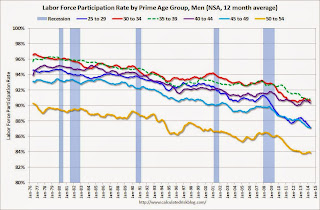Income inequality is a big deal this year (what with Obama pushing it, and Piketty’s book coming out).
Do note that it seems to be only income inequality that anyone worries about. Inequality of consumption, or skills, doesn’t seem to enter the picture. That’s kind of twisted actually: we’re worried about you have more income to buy the bigger ice cream cone, but once you’ve bought it we don’t worry about the inequality much any more.
In fact, inequality is everywhere, but we worry about it most when it’s in the form of fungible cash.
The thing is, many people will remark that somehow income inequality is a sign of a problem. That it’s somehow intentional, and therefore unnatural.
It may well be intentional, but inequality is far from unnatural. In fact it’s the norm.
Physicists know why; they call it entropy. Basically, equal distributions of things are unlikely.
To see this consider how to divide up 6 bits of stuff between 3 people. One way to do that would look like this
(6,0,0)
That’s called an ordered triple, And obviously it represents inequality; equality would be (2,2,2).
Now, I’ve chosen the numbers to make this relatively short. Keep in mind that there are 3 cases: I could have given the 6 to any of the 3 people in that set. I didn’t, but if I had, all I would be doing is multiplying the number of ordered triples I’d have to write out by three, without adding much insight. So I’ll skip over that and work around the first person in the ordered triple.
Now, continuing on, suppose the first person got 5. Now there are two possible ordered triples:
(5,1,0)
(5,0,1)
This is less unequal, but also more common.
Now consider if the first person got four:
(4,2,0)
(4,1,1)
(4,0,2)
In total, there are 6 possible distributions already, and not one of them is equal. Continuing on we get the following (and perhaps you are starting to see the pattern in how I generate the triples):
(3,3,0)
(3,2,1)
(3,1,2)
(3,0,3)
(2,4,0)
(2,3,1)
(2,2,2)
(2,1,3)
(2,0,4)
(1,5,0)
(1,4,1)
(1,3,2)
(1,2,3)
(1,1,4)
(1,0,5)
(0,5,1)
(0,4,2)
(0,3,3)
(0,2,4)
(0,1,5)
In that last group I’m skipping (0,6,0) (0,0,6) because that would match the first triple I introduced, just in a different order.
Even so, I have 26 orderings, and only one of them has equality.
What’s the takeaway from this? It’s that we should expect to find inequality just about everywhere, and we shouldn’t conclude that this is the result of intentional choice/discrimination.
Think about it. Basketball skills are unequally distributed, and no one finds this surprising or objectionable. Thriftiness is unequally distributed, and no one finds this surprising or objectionable. Hazel eyes are unequally distributed, and no one finds this surprising or objectionable. Singing ability is unequally distributed, and no one finds this surprising or objectionable. Cavities are unequally distributed, and no one finds this surprising or objectionable.
But now it gets weird.
Pennies are unequally distributed, and no one finds this surprising or objectionable. And yet pennies are a form of wealth. Aren’t we worried about the unequal distribution of pennies? Nickels too. And dimes, quarters, and even one dollar bills.
I’m going to go out on a limb here and suggest that there’s be a lot more objection to the redistribution of wealth if everyone had to either give up, or receive, a wad of one dollar bills — so that it was very visible what you gave up or what you got. This means that checks, or better yet, income tax withholding, make it far easier to make the case the inequality is unnatural. It isn’t. Remember this in discussions with friends from other backgrounds who want to debate this particular macroeconomic point.




